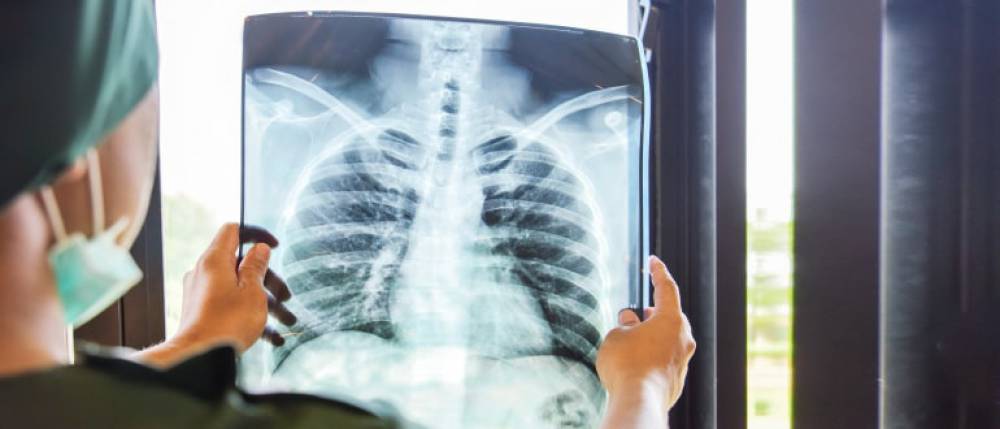Subscribe to get weekly insights
Always stay up to date with our newest articles sent direct to your inbox
Published on 28 Nov, 2022
Updated on 27 Oct, 2023
1576 Views
4 min Read

Written by Care Health Insurance
favorite0Like
favoriteBe the First to Like
Infection is the primary cause of the deadly illness known as pneumonia. It causes fluid or pus to become enflamed in the air sacs of the person's lungs. The air sacs begin to accumulate fluid, which causes coughing, difficulty breathing, fever, phlegm, chills, and pus. This disorder can fluctuate from being extremely mild to being potentially fatal. It typically tends to impact the lower respiratory tract, which is engaged in gaseous exchange. Contrary to this, walking pneumonia is a form of pneumonia in which the patient can walk normally and is frequently unaware of how grave their condition is. They are also unaffected by any respiratory discomfort.
When pneumonia isn't severe enough to necessitate bed rest or hospitalisation, it's referred to generally as "walking pneumonia." You might think you're sick. Because the symptoms are typically so light, you don't feel like you need to miss day-to-day chores, so you go out and about.
You're unlikely to visit a doctor for your minor symptoms. You might not appear unwell enough to require a chest X-ray, which is the only way to detect any pneumonia, even if you visit a doctor.
Since it is a different, more severe case, your doctor may refer to it as "atypical pneumonia."
It's frequently a lung infection. There are several potential causes, including:
Mycoplasma pneumonia bacteria are typically to blame for walking pneumonia.
Sneezes and coughs can spread walking pneumonia. But the expansion is gradual. If you contract it, you may be contagious for up to 10 days, which means you could infect others.
According to researchers, getting walking pneumonia from a healthy person requires a lot of personal contact with the infected person. Nevertheless, there are significant outbreaks every few years.
Anybody can get it. Infants, military recruits, and people under the age of 40 are particularly susceptible to walking pneumonia caused by mycoplasma.
It is more likely to affect those who live and work in densely populated areas, such as dormitories, army barracks, and nursing homes.
Walking pneumonia is more common in the late summer and early autumn months. However, infections can occur at any time of the year.
In most cases, symptoms appear 15 to 25 days after mycoplasma exposure and gradually worsen over the course of two to four days. You may have the following signs:
Call your doctor if you develop a cough, a fever, or shortness of breath to discuss if any other cause brings on the sickness.
A medical professional can identify walking pneumonia. They will undertake auscultation and a medical examination. They will enquire about your symptoms, especially their persistence. They can inquire whether any members of your family, friends, co-workers, or other people with whom you frequently interact are experiencing symptoms similar to yours.
The healthcare professional will examine your lungs with a stethoscope during auscultation. A stethoscope is a medical instrument having an earpiece and a small metal disc (diaphragm) connected by rubber tubing. They will listen for unusual sounds while pressing the diaphragm towards your back and chest.
The healthcare professional will arrange tests to help them confirm their diagnosis if they think you have walking pneumonia.
By this point, we are completely aware of the signs of both walking pneumonia and pneumonia, as well as how to diagnose them. Let's examine these two situations' critical differences in more detail:
If your symptoms don't go away after taking antibiotics for many days, consult a doctor. They can recommend a new antibiotic or advise you to take some rest and medicine to aid with your symptoms.
Additionally, it's critical to use your medications safely. Take these precisely as directed by a medical professional. Before taking several medications at once, especially painkillers, see your doctor. Having a health insurance plan in place will also be helpful if you have to face any serious health hazards.
Disclaimer - The above information is for reference purposes only: Policy Assurance and Claims at the underwriter's discretion.
favoriteBe the First to Like
Thyroid : मामूली नहीं हैं महिलाओं में थायराइड होना, जानें इसके लक्षण और घरेलू उपचार Vipul Tiwary in Diseases
शुगर कंट्रोल कैसे करे? जानें, डायबिटीज में क्या खाना चाहिए Vipul Tiwary in Health & Wellness
हाई ब्लड प्रेशर को तुरंत कंट्रोल कैसे करें? देखें इसके उपाय Vipul Tiwary in Diseases
पैरों में दर्द किस कमी से होता है? जानें, इसके घरेलू इलाज Vipul Tiwary in Health Insurance Articles
Health Benefits of Brahmi: A Complete Guide to This Ancient Ayurvedic Herb Pratham Gupta in Health & Wellness
Is Your Phone Stealing Your Sleep? Master Simple Strategies for Screen Time Mudit Handa in Health Insurance Articles
Basti Karma: The Ayurvedic Secret to Balancing Vata Dosha Mudit Handa in Health & Wellness
Parents Alert: Early Symptoms of Calcium Deficiency in Kids Jagriti Chakraborty in Child Care
Always stay up to date with our newest articles sent direct to your inbox
Loading...